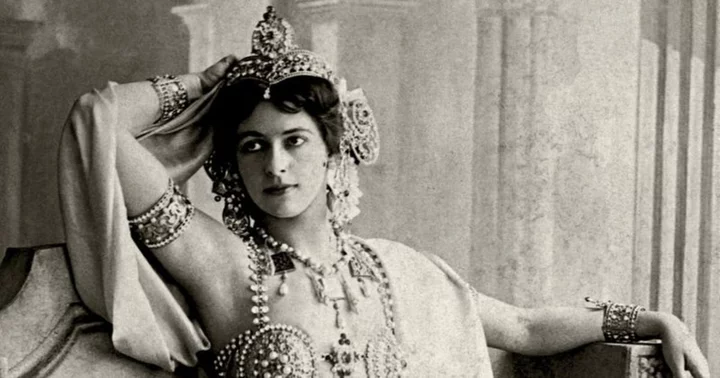LOS ANGELES, CALIFORNIA: Mata Hari, originally named Margaretha Geertruida MacLeod (née Zelle), was born in Leeuwarden, Netherlands, on August 7, 1876. She died on October 15, 1917, near Paris, France.
She was renowned as a Dutch dancer and courtesan, eventually becoming a symbol of the seductive female spy.
Notably, she faced execution by the French on charges of espionage for Germany during World War I, a fate that sparked much debate concerning her innocence.
The early life and struggles of Mata Hari
Mata Hari's early life was marked by challenges. She hailed from a prosperous hatter's family, but their financial situation deteriorated during her teenage years.
Her parents divorced, and her mother died in 1891. Following these events, Mata Hari lived with relatives and later attended a teachers' college in Leiden.
In 1895, she married Captain Rudolph MacLeod, an officer in the Dutch colonial army, but their marriage was marred by reports of Rudolph's abusive behavior and Margaretha's contraction of syphilis from him.
They resided in Java and Sumatra from 1897 to 1902, having two children, although their son's death raised questions about its cause.
Upon returning to Europe, the couple separated and divorced in 1906.
Margaretha initially retained custody of their daughter but had to leave her with Rudolph due to his refusal to provide financial support.
Mata Hari's transformation and career in Paris
Facing destitution and yearning to reunite with her daughter, Margaretha embarked on a professional dancing career in Paris in 1905, performing under the name Lady MacLeod.
She soon adopted the name "Mata Hari", which was derived from a Malay expression meaning "eye of the day".
Mata Hari possessed striking physical allure, displayed a superficial understanding of East Indian dances, and was willing to appear almost nude in public, earning her instant fame in Paris and other major cities.
Throughout her adult life, she engaged in numerous love affairs, some of which were with military officers and had financial aspects.
The enigma of Mata Hari's espionage activities
The true extent of Mata Hari's espionage activities remains shrouded in uncertainty. Some accounts suggest that while residing in The Hague in late 1915, an honorary German consul offered to pay her for gathering information on her next trip to France.
Following her arrest by the French authorities, she admitted to receiving money from Germany but claimed to have provided only outdated intelligence to a German intelligence officer.
Mata Hari's statements implied that she had agreed to act as a French spy in German-occupied Belgium without disclosing her prior arrangement with the Germans.
Her aim was to secure the support of Ernest Augustus, the Duke of Brunswick-Luneburg in Germany, who was the heir to the dukedom of Cumberland in the British peerage.
The arrest, trial, and execution of Mata Hari
As suspicions of Mata Hari's duplicity grew, she was arrested and incarcerated in Paris on February 13, 1917.
Officials accused her of being responsible for the deaths of as many as 50,000 French soldiers through espionage on Germany's behalf, although no concrete evidence supported this claim.
On July 24–25, 1917, she faced a military court trial and was sentenced to death. About three months later, she met her demise by a firing squad.
Though the notion that she blew kisses to her executioners was later debunked, it appears true that she refused to wear a blindfold.
Mata Hari's posthumous legacy and reexamination
After her death, Mata Hari became the subject of numerous books and movies.
Over time, doubts emerged about her guilt, and in 1930, the German government publicly declared her innocence. Subsequently, French documents related to her activities cast doubt on her culpability.
In 2017, France released additional documents that led many to believe she had been made a scapegoat by French officials seeking someone to blame for their wartime setbacks.
Additionally, it was theorized that her disregard for societal norms played a role in her arrest, conviction, and execution.

